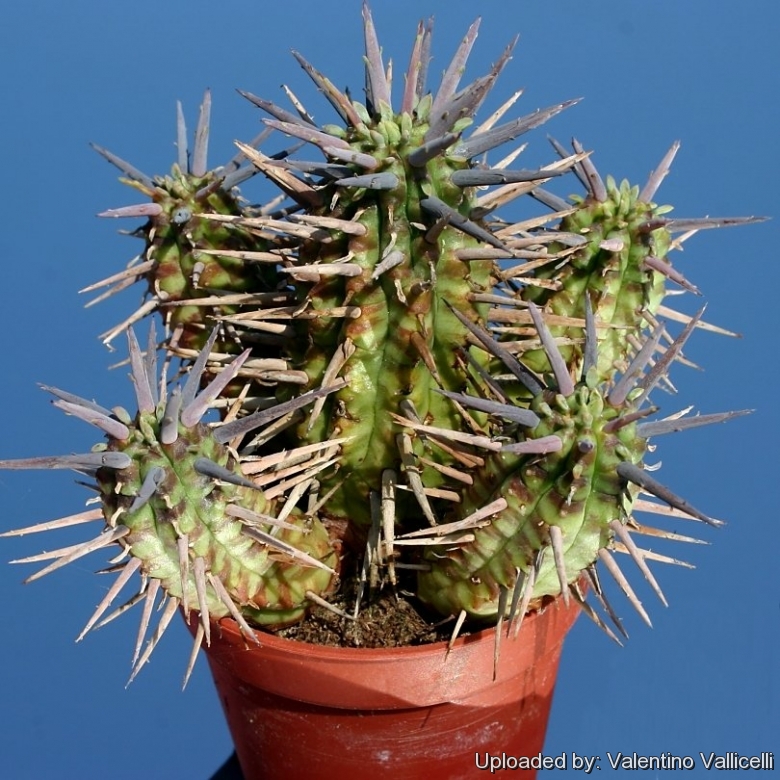
Euphorbia ferox Photo by: Valentino Vallicelli
Origin and Habitat: South Africa, Cape of Good Hope, Great Karoo area (the distribution-area starts in the east around Graaff Reinet, and from there to the west until Beaufort West. )
Habitat: At some locations it is the most dominant vegetation, often growing together with Euphorbia esculentaSN|25164]] and Euphorbia esculentaSN|25164]].
Synonyms:
Common Names include:
ENGLISH: Pincushion Euphorbia
Description: Small spiny succulent shrublet branching at the base, it will form rounded clusters up to 60 cm in diameter.
Stem: It has columnar spiny succulent green stems, about 5 cm in diameter. The stem looks like a green corncob with thorns. Ribs are linear with minimal cross-channels.
Leaves: Tiny, ephemerals.
Spines: The spines are indeed solitary sterile peduncles. They are very numerous, about 6 mm apart, stout, spiny rigid, 1-6 cm straight , reddish turning purple and finally grey.
Remarks: Euphorbia feroxSN|13372]]SN|13372]] has a large area of distribution and is a very variable species. The difference between populations is the frequency of the appearance in which these forms do occur. So it is possible that two individuals of two different populations can look very similar and also, that two plants of the same population can look very different. However when you are looking at the whole population, you can see the difference between one population and another.
Notes: Euphorbia feroxSN|11431]]SN|13372]] belongs to Euphorbia section 19, along with Euphorbia aggregataSN|14279]]SN|11431]], Euphorbia polygonaSN|21536]], Euphorbia anoplia, Euphorbia enoplaSN|14279]], Euphorbia enoplaSN|14279]], Euphorbia pentagona and Euphorbia polygonaSN|21536]] which are all similar in form. In particular, Euphorbi ferox looks a lot like Euphorbia enoplaSN|11431]]SN|14279]], but the "ferox" is much fatter.
It belongs to a group of plants, together with the closely related species Euphorbia pulvinata and Euphorbia aggregataSN|13372]]SN|11431]], which can be recognised by their striking growing-shape. They consist mostly of compact, multiple-branched and heavily-thorned cushions. These species are closely related, and for an outsider it's very difficult to distinguish them. There are differences though. The english nickname "pincushion" says enough.
Bibliography: Major references and further lectures
1) Urs Eggli “Illustrated Handbook of Succulent Plants: Dicotyledons” Springer, 2002
2) Hermann Jacobsen “A handbook of succulent plalnts: Abromeitiella to Euphorbia” Blandford Press, 1960
3) James Cullen, Sabina G. Knees, H. Suzanne Cubey “The European Garden Flora Flowering Plants: A Manual for the Identification of Plants Cultivated in Europe, Both Out-of-Doors and Under Glass” Cambridge University Press, 11/ago/2011
4) Doreen Court “Succulent Flora of Southern Africa” CRC Press, 01/giu/2000
5) Alain Campbell White, Robert Allen Dyer, Boyd L. Sloane “The succelent Euphorbisae (southern Africa)” Abbey garden press, 1941
6) Werner Rauh “Cultivation and Description of Selected Succulent Plants Other Than Cacti” Smithsonian Institution Press 1984
7) Gibbs Russell, G. E., W. G. Welman, E. Reitief, K. L. Immelman, G. Germishuizen, B. J. Pienaar, M. v. Wyk & A. Nicholas. “List of species of southern African plants.” Mem. Bot. Surv. S. Africa 2(1–2): 1–152(pt. 1), 1–270(pt. 2). 1987.
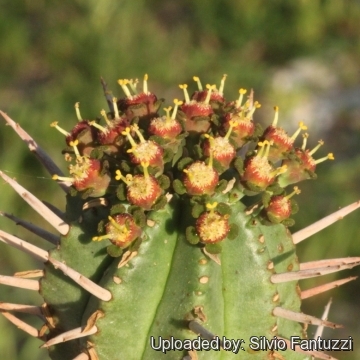 Euphorbia ferox Photo by: Silvio Fantuzzi
Euphorbia ferox Photo by: Silvio Fantuzzi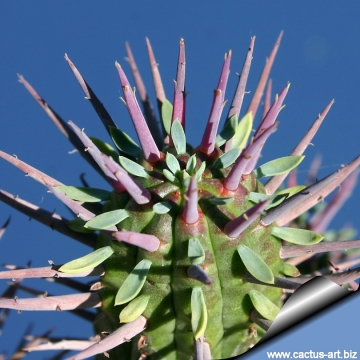 Euphorbia ferox Photo by: Cactus Art
Euphorbia ferox Photo by: Cactus Art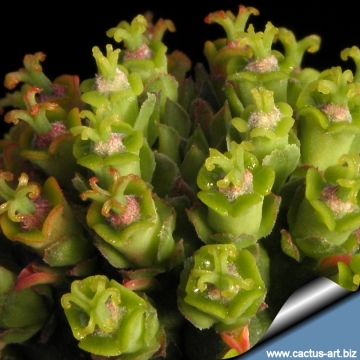 Female flowers. Photo by: Cactus Art
Female flowers. Photo by: Cactus Art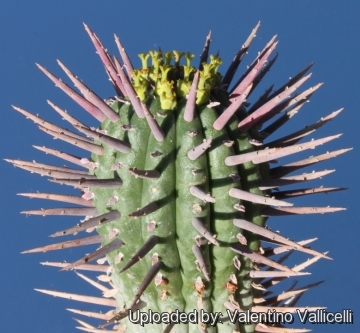 Female. Photo by: Valentino Vallicelli
Female. Photo by: Valentino Vallicelli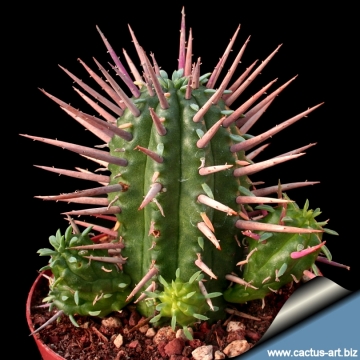 Euphorbia ferox Photo by: Cactus Art
Euphorbia ferox Photo by: Cactus Art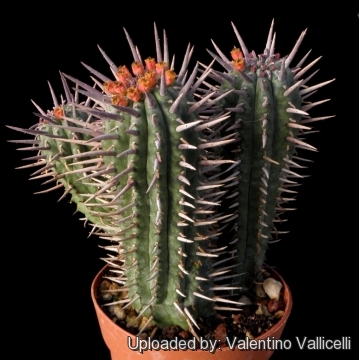 Male. Photo by: Valentino Vallicelli
Male. Photo by: Valentino Vallicelli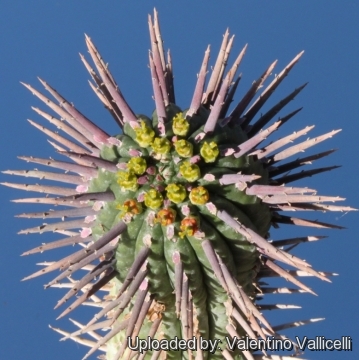 Euphorbia ferox Photo by: Valentino Vallicelli
Euphorbia ferox Photo by: Valentino Vallicelli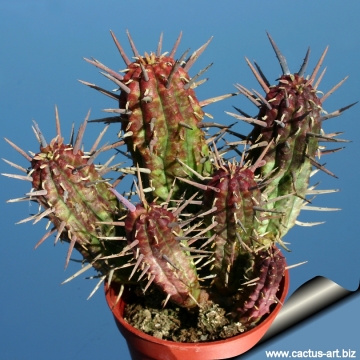 Euphorbia ferox Photo by: Cactus Art
Euphorbia ferox Photo by: Cactus ArtCultivation and Propagation: Common and easy to grow plant for pot culture. It grows well in a very draining mineral potting substrate, but it isn't picky about soil. The area to which this plant is native receives rains in both winter and summer, so it can be watered moderately all year around (except in the coldest month of the winter, as it rots easily, especially if overly wet). During the summer they enjoy average feeding and watering. When dormant in winter, keep it totally dry at or around 4°C, even though it seems to tolerate light frosts well. Mature healthy plants are tough and can also be grown out-of-doors where frost is not too severe, but when left out it is more sensitive to frost. They do need a lot of light to keep their compact growth-form, but different clones vary in their tolerance of full sunshine. But best colour if grown in protection in light shade, where the thick purple spines of this low-growing clumping columnar plant have the best colour. Sometimes, in really hot full sun all day long, a plant will bleach out a bit
Propagation:: It is propagated by cuttings (It branches enthusiastically, and offsets are readily available). If you remove an offset, remember to let it dry for a week or so, letting the wound heal (cuttings planted too soon easily rot before they can grow roots). It is better to wash the cut to remove the latex.
Warning: As with all other Euphorbias when a plant get damaged it exudes a thick white milky sap known as latex. This latex is poisonous, and may irritate skin. Pay extreme attention not to get any in your eyes or mouth.
Cultivated plants must be handled carefully.
Your Photos
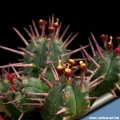
by Cactus Art
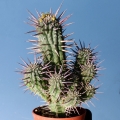
by Valentino Vallicelli

by Cactus Art

by Valentino Vallicelli
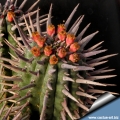
by Valentino Vallicelli
























